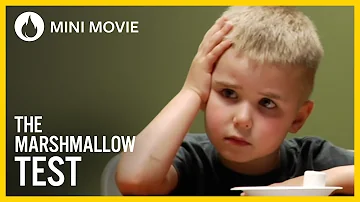What happened in the marshmallow experiment?
Innehållsförteckning
- What happened in the marshmallow experiment?
- What did the marshmallow and gorilla test show?
- What animals pass the marshmallow test?
- What is the meaning of marshmallow test?
- What is marshmallow challenge?
- How do you escape instant gratification?
- What was the original marshmallow test?
- Which question was central to the marshmallow test?
- Can dogs pass the marshmallow test?
- Do animals show delayed gratification?
- Does the marshmallow test really predict delayed gratification?
- What happened in the marshmallow experiment?
- What does the marshmallow test tell us about self-control?
- How many marshmallows can a child eat?

What happened in the marshmallow experiment?
The Stanford marshmallow experiment was a study on delayed gratification in 1972 led by psychologist Walter Mischel, a professor at Stanford University. In this study, a child was offered a choice between one small but immediate reward, or two small rewards if they waited for a period of time.
What did the marshmallow and gorilla test show?
The surprising thing the 'marshmallow test' reveals about kids in an instant-gratification world. ... Research suggests that superior results on a delayed-gratification task during the toddler years is associated with better performance in school and in jobs, healthier relationships, and even fewer chronic diseases.
What animals pass the marshmallow test?
Scientists have found evidence that cuttlefish, a rounder relative of squid and octopuses, can pass the so-called marshmallow test, a study originally used to research delayed gratification in humans. In the original study, children were offered a choice between eating one marshmallow right away or waiting to get two.
What is the meaning of marshmallow test?
an experiment in which self-control is assessed through whether the subject, usually a child, chooses to eat a presented treat, such as a marshmallow or cookie, for immediate gratification or chooses to wait in order to get an additional, promised treat. ...
What is marshmallow challenge?
The marshmallow challenge is a simple design exercise for small groups. ... The rules are easy; in 18 minutes, each group can use 20 sticks of spaghetti, one yard of tape, and one yard of string, and one marshmallow to build the tallest structure with the marshmallow on the top.
How do you escape instant gratification?
How to Overcome Instant Gratification
- Watch the urges. We all have urges, to check on email or social media, to eat something sweet or fried, to procrastinate or find distractions. ...
- Delay. ...
- Make a conscious decision. ...
- Learn over time. ...
- Enjoy the moment without following the urge.
What was the original marshmallow test?
In a series of studies that began in the late 1960s and continue today, psychologist Walter Mischel, PhD, found that children who, as 4-year-olds, could resist a tempting marshmallow placed in front of them, and instead hold out for a larger reward in the future (two marshmallows), became adults who were more likely to ...
Which question was central to the marshmallow test?
The marshmallow test was specifically designed to answer the question of: how well can a child resist the urge to claim an immediate reward in order...
Can dogs pass the marshmallow test?
This skill enables them to control their impulses and delay eating the first marshmallow to wait for a larger reward. Other animals are capable of such planning when faced with similar situations. Dogs, primates, and corvids (birds) can pass the test.
Do animals show delayed gratification?
Patience is sometimes thought of as a uniquely human trait. Studies find that animals can also delay gratification, suggesting that the trait of patience may be more widespread. Animals including primates, birds and dogs are able to delay gratification, and apes have even outperformed humans in some tests.
Does the marshmallow test really predict delayed gratification?
- The replication suggested that economic background, rather than willpower, explained the other half. The predictive power of marshmallow test was challenged in a 2020 study by a team of researchers that included Mischel. The first experiment in delayed gratification was conducted by Walter Mischel and Ebbe B. Ebbesen at Stanford University in 1970.
What happened in the marshmallow experiment?
- Let’s talk about what happened and, more importantly, how you can use it. The experiment began by bringing each child into a private room, sitting them down in a chair, and placing a marshmallow on the table in front of them. At this point, the researcher offered a deal to the child.
What does the marshmallow test tell us about self-control?
- For the past four decades, the “marshmallow test” has served as a classic experimental measure of children’s self-control: will a preschooler eat one of the fluffy white confections now or hold out for two later? Now a new study demonstrates that being able to delay gratification is influenced as much by the environment as by innate ability.
How many marshmallows can a child eat?
- In the marshmallow test, young children are given one marshmallow and told they can eat it right away or, if they wait a while, while nobody is watching, they can have two marshmallows instead. The half-century-old test is quite well-known.















